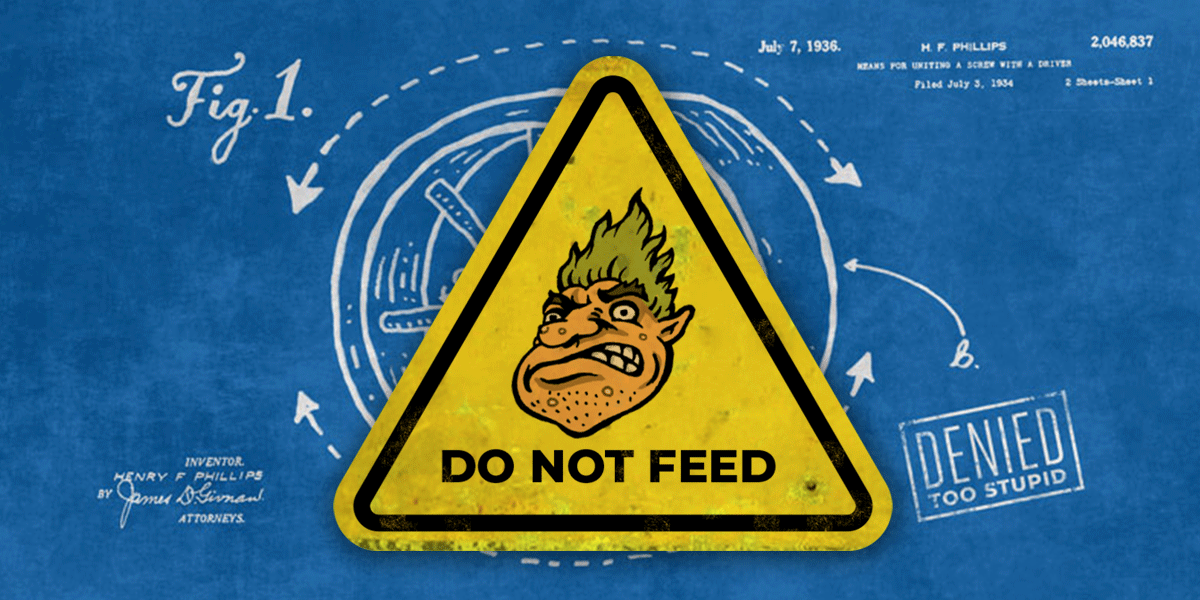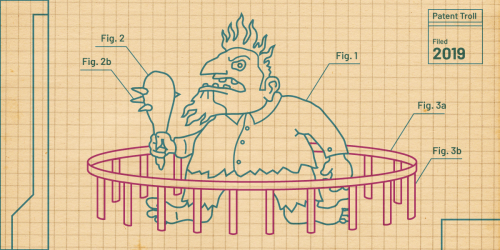In 2014, the Supreme Court decided the landmark Alice v. CLS Bank case. The Court held generic computers, performing generic computer functions, can’t make something eligible for patent protection. That shouldn’t be controversial, but it took Alice to make this important limitation on patent-eligibility crystal clear.
Last year, the Patent Office decided to work around that decision, so that the door to bogus software patents could swing open once again. The office issued new guidance telling its examiners how to avoid applying Alice. In response to that proposal, more than 1,500 of you told the Patent Office to re-consider its guidance to make sure that granted patents are limited to those that are eligible for protection under Alice. Unfortunately, the Patent Office wouldn’t do it. The office and its director, Andre Iancu, refused to adapt its guidance to match the law, even when so many members of the public demanded it.
Now, the Patent Office has issue a report, “Adjusting to Alice,” that summarizes the results of its revised guidance on patent eligibility. What do those results show? That examiners are granting more patents and rejecting fewer, than they did when they were following Alice. For example, the Patent Office touted a steep decline in the likelihood that a patent application will receive a first (or preliminary) rejection for lack of patent-eligibility. According to the report, the likelihood of a first rejection on these grounds rose by 31% in the first year and a half after Alice, but has fallen by 25% in the year since the Patent Office issued its revised guidance. The Patent Office is practically back to applying the pre-Alice patent-eligibility standards. In simple terms: they’re ignoring Alice.
The Patent Office seems proud of this fact, but lax standards are nothing to brag about. Increased eligibility rejections are a good thing because they mean that patent examiners are filtering out patents that shouldn’t be issued. Such rejections also promote improvements in patent quality and clarity, since applicants can amend their application and make it better. The Patent Office should be encouraging examiners to issue rejections like these. They will improve the clarity of granted patents, and the public’s ability to understand their scope. That gets us closer to the patent system’s intended purpose of promoting innovation.
People who care about promoting innovation should be concerned that the Patent Office’s report includes only first rejections. Why isn’t the Office measuring the impact of its guidance on final rejections? Because there is none: examiners practically never make final rejections based on Alice. First rejections are important because they are the only mechanism the public has been able to trust examiners to use to prevent ineligible patents from issuing. That makes these results especially troubling: if the Patent Office isn’t issuing first rejections based on ineligibility, it isn’t issuing any. As a result, the public has no reason to think a granted patent should pass muster under Alice.
In 2016, the Director of the Patent Office promised to “focus on enhancing patent quality” and to “improve patent quality for the benefit of all.” Unfortunately, the Patent Office’s Adjusting to Alice report completely ignores the impact of its new guidance on the clarity or quality of issued patents. Based on the Patent Office’s report, all that matters is “certainty”—i.e., the certainty that an application will be granted, and that a patent will be issued. That kind of certainty may be good news for patent applicants and those who make money off granted patents, but it’s bad news for everyone who builds, makes, and uses products in fields like software, that are entangled in patent thickets.
For people who work with technology, the Patent Office’s self-congratulatory report is bad news. It means there will be more abstract software patents, and more patent trolls who exploit them. We hope the Patent Office changes course. Until it does, anyone accused of patent infringement should be aware: there’s no certainty that granted patents have passed even the most basic test for eligibility. And courts should know that in many cases, they will have to step up and do what patent examiners should be doing: apply Alice fully and fairly to patents claiming computer-implemented “inventions.”











